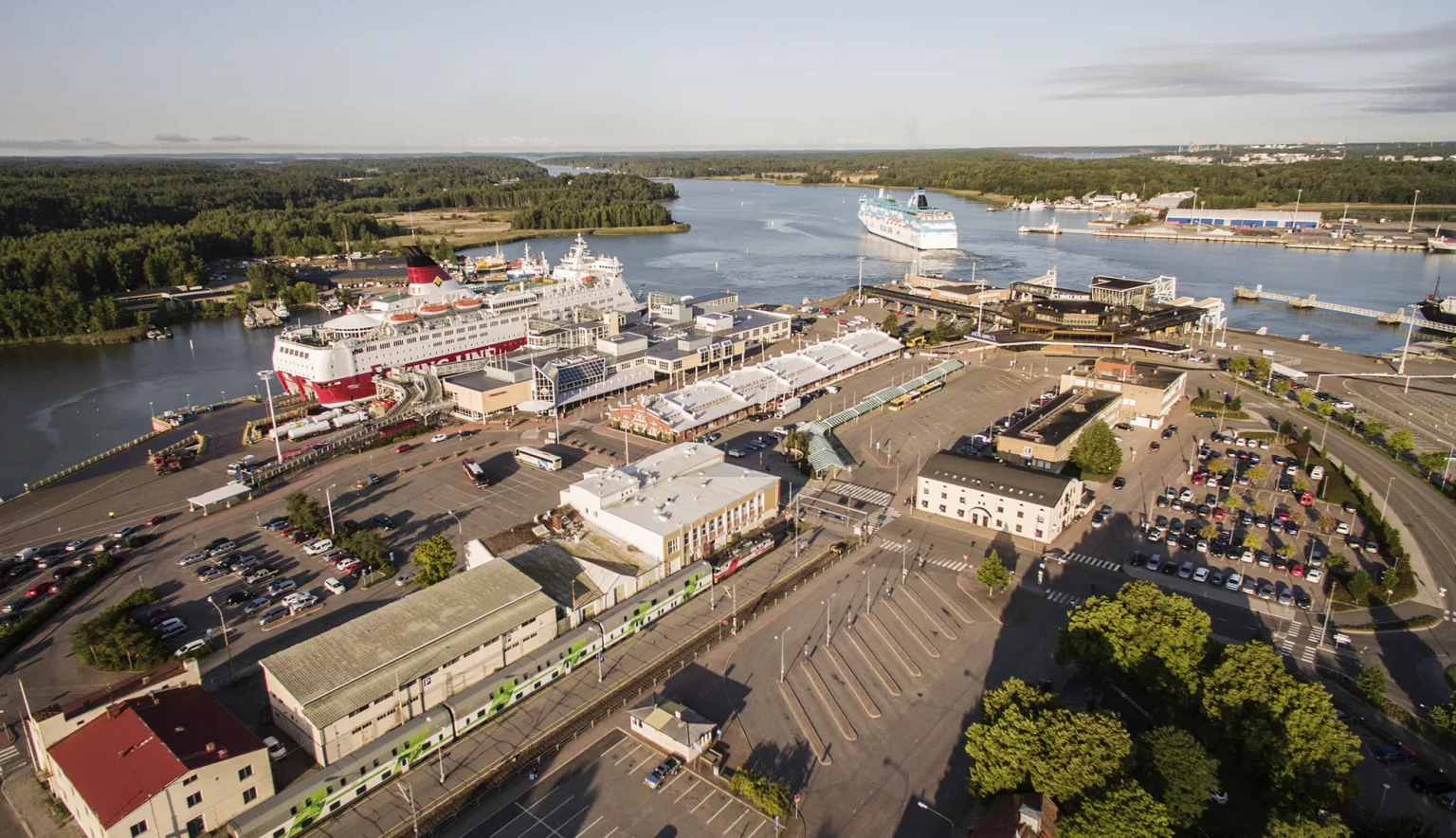Port of Turku is an important source of vitality for the Finnish economy, acting as an epicentre for national tourism and trade by serving more than three million people every year.
FINLAND’S GATEWAY TO THE WORLD
Maritime activities have always been tremendously important to Northwestern Europe.
From the Vikings (800-1066 AD) leveraging their unrivalled naval architecture in consolidating commercial shipping routes between the Baltic Sea and the Caspian Sea, to the Hanseatic League – an alliance of roughly 160 European trading settlements that controlled some 60,000 tonnes of shipping by the end of the 15th century – waterborne trade has been a staple of the region for well over a millennia.
Of course, the rise of road and air freight have enabled diversification in global trading activities, but the upper continent’s coastal geographies have ensured that the sea is still critically important even today.
Take a look at Finland, for example. Approximately 90 percent of its imports and 80 percent of its exports are currently carried by ships, its key national maritime hubs and shipping routes acting as the vital organs and arteries of the country.
Within this context, Port of Turku is a vital chamber in Finland’s heart. With activities dating back to 1154 AD, this once humble trading town is now the home of 186,000 people.
“Port of Turku is the bridgehead between Finland and Scandinavia,” explains Erik Söderholm, the port’s Managing Director. “Why? Because it takes 10 hours to travel between Turku and Stockholm via sea – the perfect amount of resting time for lorry drivers.
“There’s a shipping line from Helsinki as well but this takes 15 hours, which is okay for tourists and cruising, but too long for lorry drivers with these extra five hours equating to a substantial opportunity cost. As a result, over 100,000 trucks travel from Turku to Stockholm on boats every year.”
INVESTING IN EFFICIENCY
Indeed, Söderholm himself is one individual who has witnessed the undeniable socioeconomic importance of the port endure throughout his lifetime.
Having contributed to the European supply chain for the past 35 years, working in sea, air and road freight and warehousing across Sweden, Poland and his home country, he has interestingly gone full circle since first starting out.
“My first job was actually a work placement at Port of Turku that I secured back in 1980 during my university studies,” he muses. “I’ve been in this business from the outset – it probably stems from my father as he followed a similar path, but it has always been interesting to me. Logistics is very international, and it has taken me around the world.”
Now acting as the port’s MD, Söderholm is overseeing what can only be described as a transformational period in its lengthy history.
While the concept of moving goods from A to B via the sea has not changed much in hundreds, even thousands of years, ports and shipping lines are able to operate more efficiently and effectively today than ever before. For Turku, embodying this progression at every stage is crucial, doing so through a multitude of strategic investments.
“The biggest focus for us right now is the design and build of a new state-of-the-art ferry terminal,” Söderholm affirms.
“Currently we serve Viking and Tallink Silja, two shipping lines which have their own separate terminals in Turku. The idea, however, is to create one flagship facility that they will both use featuring a brand-new loading area and renewed railhead connections.
“In addition, we’re investing in cutting-edge technologies. We’re working on our outer mooring at the quay sides which soon won’t require any lashings, and looking to implement 5G Wifi and SecurePax – a security system that’s essentially a copy and paste of those used in airports, where everything will be scanned.”
By the MD’s own estimations this plethora of projects will cost in the region of €150-200 million euros to complete, a substantial figure, yet one that reflects the importance of Port of Turku to the Finnish economy.
AN EYE TO THE FUTURE
Coupling this progressive investment strategy is an equally forward-thinking approach to employment.
Speaking of the Port’s dedicated workforce, Söderholm is quick to iterate his appreciation for those that have honed their craft and knowledge of the organisation’s operations over many years, pointing to them as critical pillars of its overall success.
At the same time, however, the MD outlines the importance of attracting new talent to the team. He states: “The world is changing, and as our environment moves our ideas and capabilities need to advance accordingly.
“I’m 58. I didn’t come from university two years ago, and we need to strike the balance between those proven, reliable, experienced staff and those who can bring in a fresh outlook from different technical backgrounds. That requires getting young people excited about working for our company – something we’re looking to do constantly.”
Coupled with its focus on state-of-the-art technologies, social responsibility in the form of environmental excellence is a way in which the company is striving to achieve this.
Since 2006, the port has been imposing charges on ships coming into the port in relation to their carbon footprint as an incentive to try and get more clean vessels in Finnish waters. Meanwhile, more recently it has taken further steps to consolidate its position as a spearhead of environmental policy.
“We took a decision in 2018 to dispose of our dredging masses on land, no longer dumping them back in the sea,” Söderholm reveals. “The cost is greater, up to 10 times more expensive in fact, but we have made this commitment for the betterment of the environment.
“Likewise, we now direct the sewage from the vessels that call into the port directly into Turku’s municipal systems, ensuring that this waste isn’t projected into the oceans. These things are important to us.”
Indeed, taking continual strides in this space and finalising planning for the first phase of the ferry terminal project will be key objectives for Port of Turku moving forward.
In regard to the latter, Port of Turku has been working closely with Viking Line, Tallink SiljaLine, city planners and its suppliers, anticipating that all parties will come to a satisfactory conclusion for what this new construct will look like in the summer of 2020, its completion earmarked for 2025/26.
It has a number of alternate ambitions in the long term, however, eyeing new markets further afield.
“Currently three million passengers pass through our port every year, but we would of course like to see more traffic coming and going from Port of Turku,” the MD explains. “We recently signed an agreement with the Port of Gdynia in alignment with this, pledging our support for any new shipping company that would like to create new traffic within our ports.
“We already have lines between the UK, Germany, Netherlands, Norway, Poland and Scandinavia, but the volumes from Eastern Europe and the hinterland countries like Czech Republic and Hungary are growing fast. Certainly, we will keep our eye
on this booming region among others moving forward.”




































